Chart Color Schemes
est. as @ -- *
ABS ERP | -- people | --
2021 Census | -- people
Sales Activity
Curious about local property values? Filter the chart to assess the volume and appreciation (including resales) trends and regional comparisons, or scroll to the map below view this information at an individual property level.
Find a Recent Sale
Sales Detail
Population
Gilmore has shown very soft population growth performance across periods assessed by AreaSearch
Gilmore's population, as per AreaSearch's analysis, stood at approximately 2,648 as of August 2025. This figure reflects a decrease of 58 people, representing a 2.1% drop since the 2021 Census which reported a population of 2,706. The change was inferred from the estimated resident population of 2,648 from the ABS as of June 2024 and an additional 18 validated new addresses since the Census date. This results in a population density ratio of 1,291 persons per square kilometer, which is higher than the average seen across national locations assessed by AreaSearch. While Gilmore experienced a 2.1% decline since the census, the SA3 area achieved 0.2% growth, indicating divergent population trends. Natural growth contributed approximately 68.3% of overall population gains during recent periods.
AreaSearch adopted ABS/Geoscience Australia projections for each SA2 area, released in 2024 with a base year of 2022. For areas not covered by this data and years post-2032, age group growth rates from the ACT Government's SA2 area projections, using 2022 as a base, were adopted. According to these projections, over the period, Gilmore's population is expected to decline by 165 persons by 2041. However, specific age cohorts are anticipated to grow, notably the 45 to 54 age group, projected to increase by 40 people.
Frequently Asked Questions - Population
Development
The level of residential development activity in Gilmore is very low in comparison to the average area assessed nationally by AreaSearch
Gilmore averaged approximately five new dwelling approvals annually over the past five financial years, totalling 28 homes. As of FY-26, zero approvals have been recorded so far. The population has decreased during this period, suggesting that new supply has likely met demand, providing good options for buyers with an average construction cost value of $79,000, which is below regional norms and offers more affordable housing choices.
Compared to the Australian Capital Territory, Gilmore has 11.0% less new development per person and ranks in the 38th percentile nationally, indicating limited purchasing options for buyers and supporting demand for existing homes. This is due to the area's maturity and possible planning constraints. New building activity comprises 20.0% detached dwellings and 80.0% medium and high-density housing, creating more affordable entry points suitable for downsizers, investors, and first-home buyers. This shift from the area's existing housing composition of 93.0% houses indicates decreasing developable sites and reflects changing lifestyles requiring diverse, affordable housing options. With approximately 1445 people per approval, Gilmore is a mature, established area with an expected stable or declining population, potentially reducing housing pressure and creating buying opportunities.
With population expected to remain stable or decline, Gilmore should see reduced pressure on housing, potentially creating opportunities for buyers.
Frequently Asked Questions - Development
Infrastructure
Gilmore has moderate levels of nearby infrastructure activity, ranking in the 43rdth percentile nationally
No factor impacts a region's performance more than changes to local infrastructure, major projects, and planning initiatives. AreaSearch has identified zero projects set to affect this area. Key projects include Monaro Highway Safety Upgrades, Canberra Light Rail Stage 4 - Woden to Tuggeranong, Queanbeyan Regional Integrated Transport Plan, and Deakin Private Hospital. The following list details those most likely to be relevant.
Professional plan users can use the search below to filter and access additional projects.
INFRASTRUCTURE SEARCH
 Denotes AI-based impression for illustrative purposes only, not to be taken as definitive under any circumstances. Please follow links and conduct other investigations from the project's source for actual imagery. Developers and project owners wishing us to use original imagery please Contact Us and we will do so.
Denotes AI-based impression for illustrative purposes only, not to be taken as definitive under any circumstances. Please follow links and conduct other investigations from the project's source for actual imagery. Developers and project owners wishing us to use original imagery please Contact Us and we will do so.
Frequently Asked Questions - Infrastructure
Low and Mid-Rise Housing Policy
State-wide NSW planning reforms via amendments to the State Environmental Planning Policy to enable more diverse low and mid-rise housing (dual occupancies, terraces, townhouses, manor houses and residential flat buildings up to 6 storeys) in well-located areas within 800 m of selected train, metro and light-rail stations and town centres. Stage 1 (dual occupancies in R2 zones statewide) commenced 1 July 2024. Stage 2 (mid-rise apartments, terraces and dual occupancies near stations) commenced 28 February 2025. Expected to facilitate up to 112,000 additional homes over the next five years.
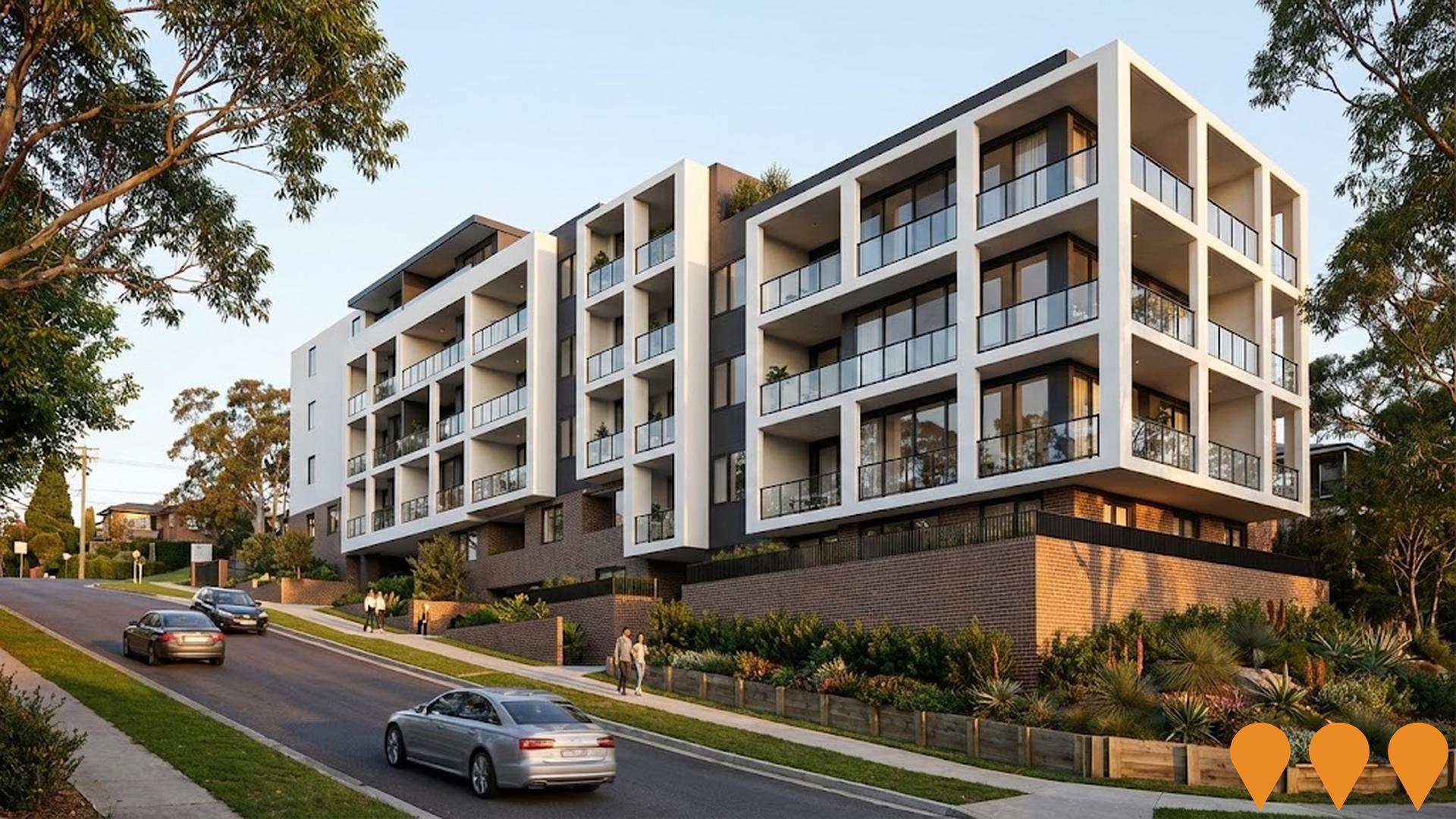
Canberra Light Rail Stage 4 - Woden to Tuggeranong
Proposed extension of Canberra's light rail network from Woden Town Centre south to Tuggeranong Town Centre via Mawson and the Athllon Drive corridor. This future stage aims to complete the north-south radial mass transit spine, connecting major residential, employment and activity centres while supporting bus, cycling, walking and private vehicle integration.
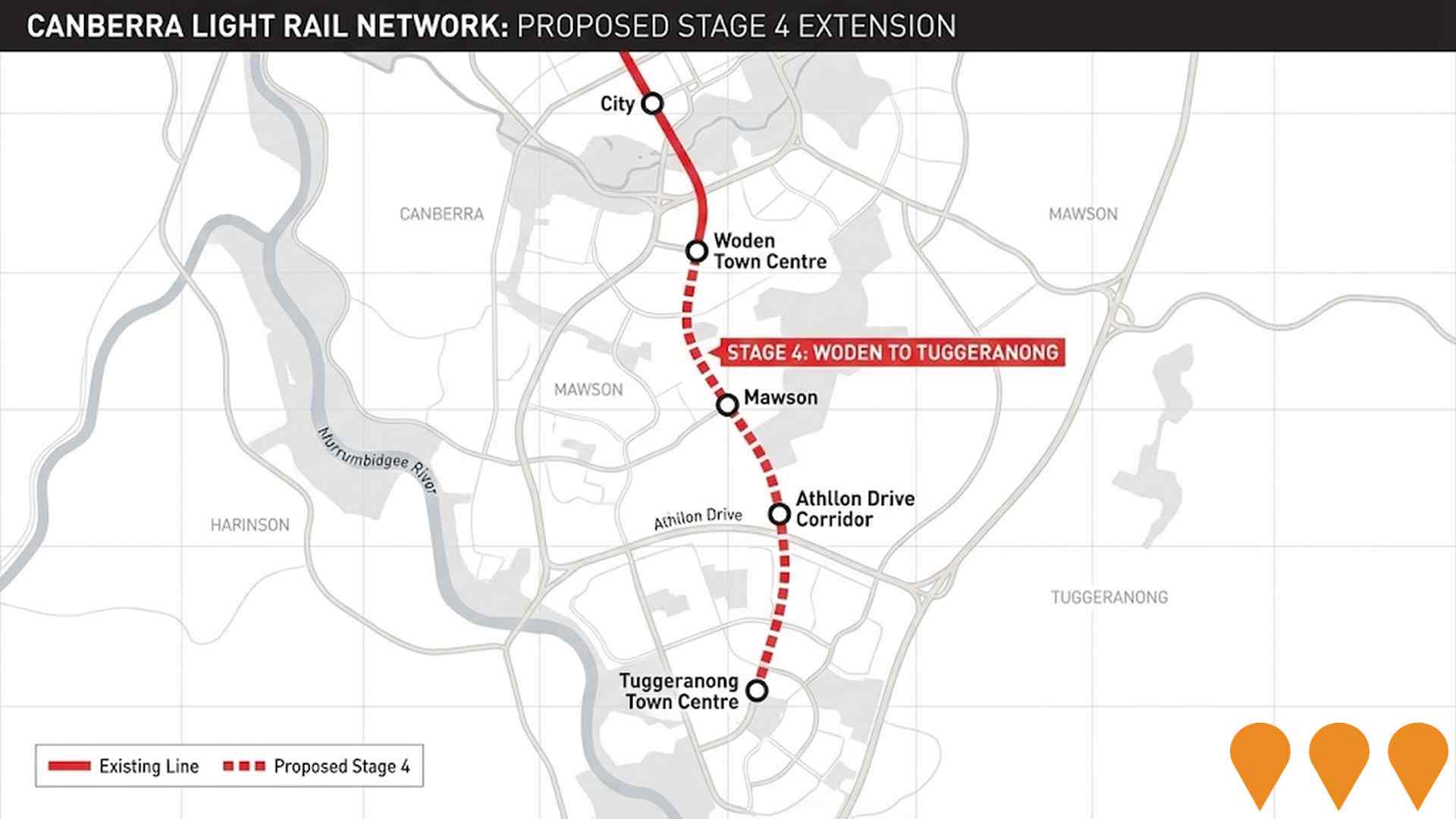
Enhanced bus and light rail corridors (Belconnen & Queanbeyan to Central Canberra)
ACT is progressing an integrated program to enhance high-frequency bus and future light rail corridors that link Belconnen and Queanbeyan with central Canberra. Light Rail Stage 2A (City to Commonwealth Park) commenced construction in early 2025 with services targeted from 2028, while planning and approvals continue for Stage 2B to Woden. The ACT Government has acknowledged and is planning upgrades for the Belconnen-to-City bus corridor as groundwork for a future east-west light rail Stage 3, and is coordinating cross-border public transport initiatives with NSW through the Queanbeyan Region Integrated Transport Plan and the ACT-NSW MoU for Regional Collaboration.
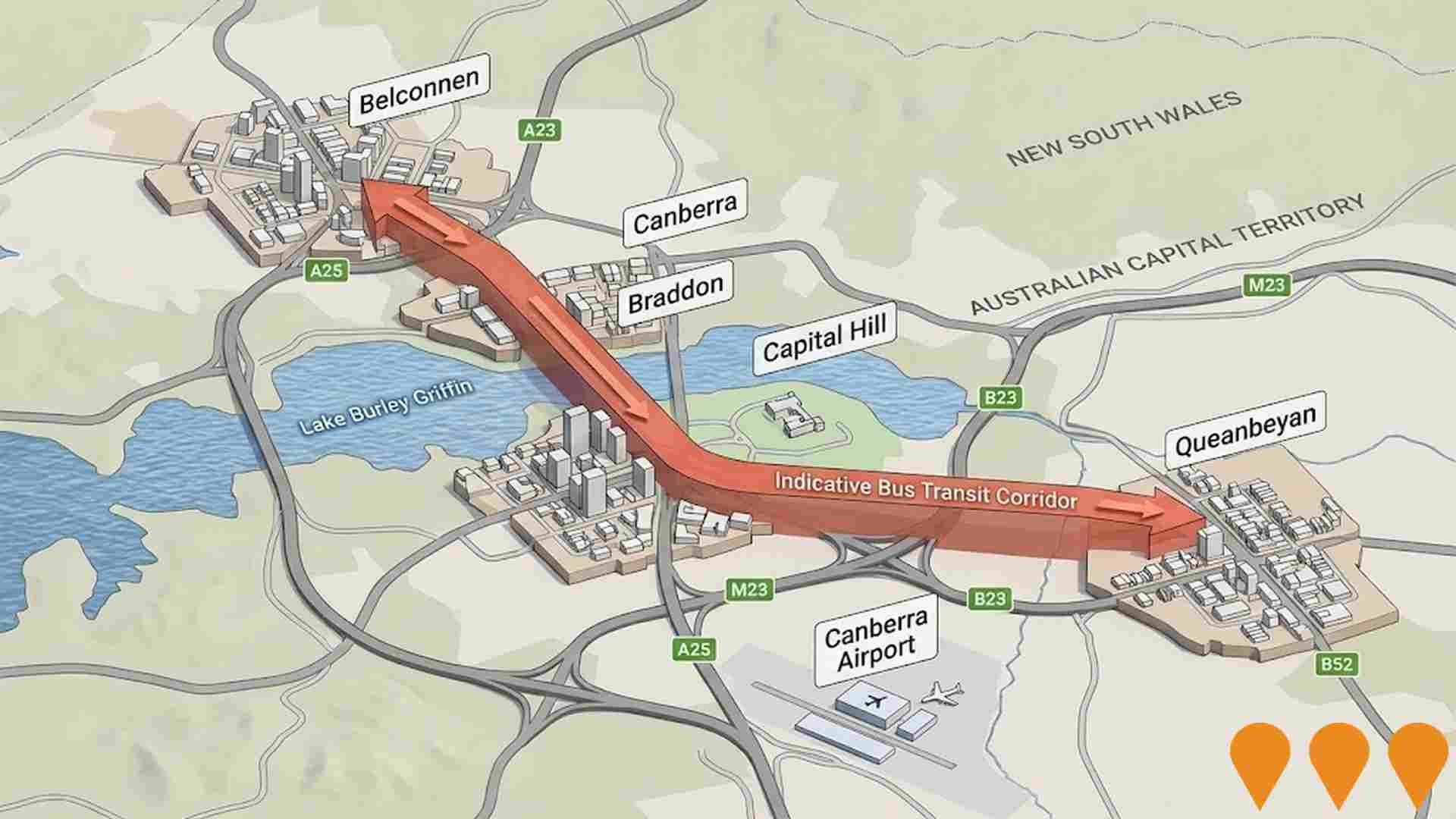
HumeLink
HumeLink is a new 500kV transmission line project connecting Wagga Wagga, Bannaby, and Maragle, spanning approximately 365 km. It includes new or upgraded infrastructure at four locations and aims to enhance the reliability and sustainability of the national electricity grid by increasing the integration of renewable energy sources such as wind and solar.
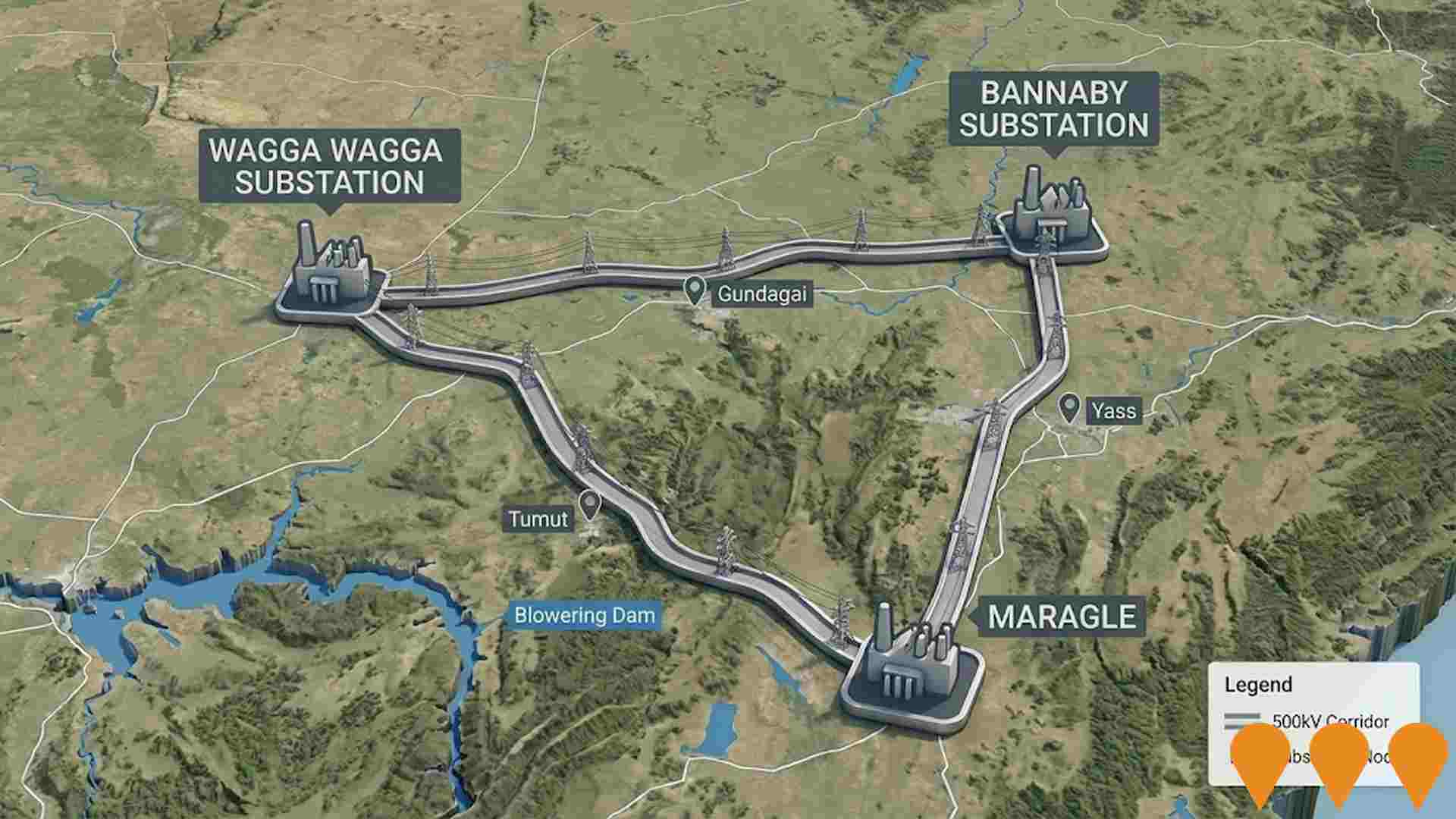
Queanbeyan Regional Integrated Transport Plan
Comprehensive transport planning initiative with 64 key actions for next 10 years. Addresses road safety, active transport connectivity, public transport availability, and future transport needs. Improved connections between Queanbeyan and ACT.
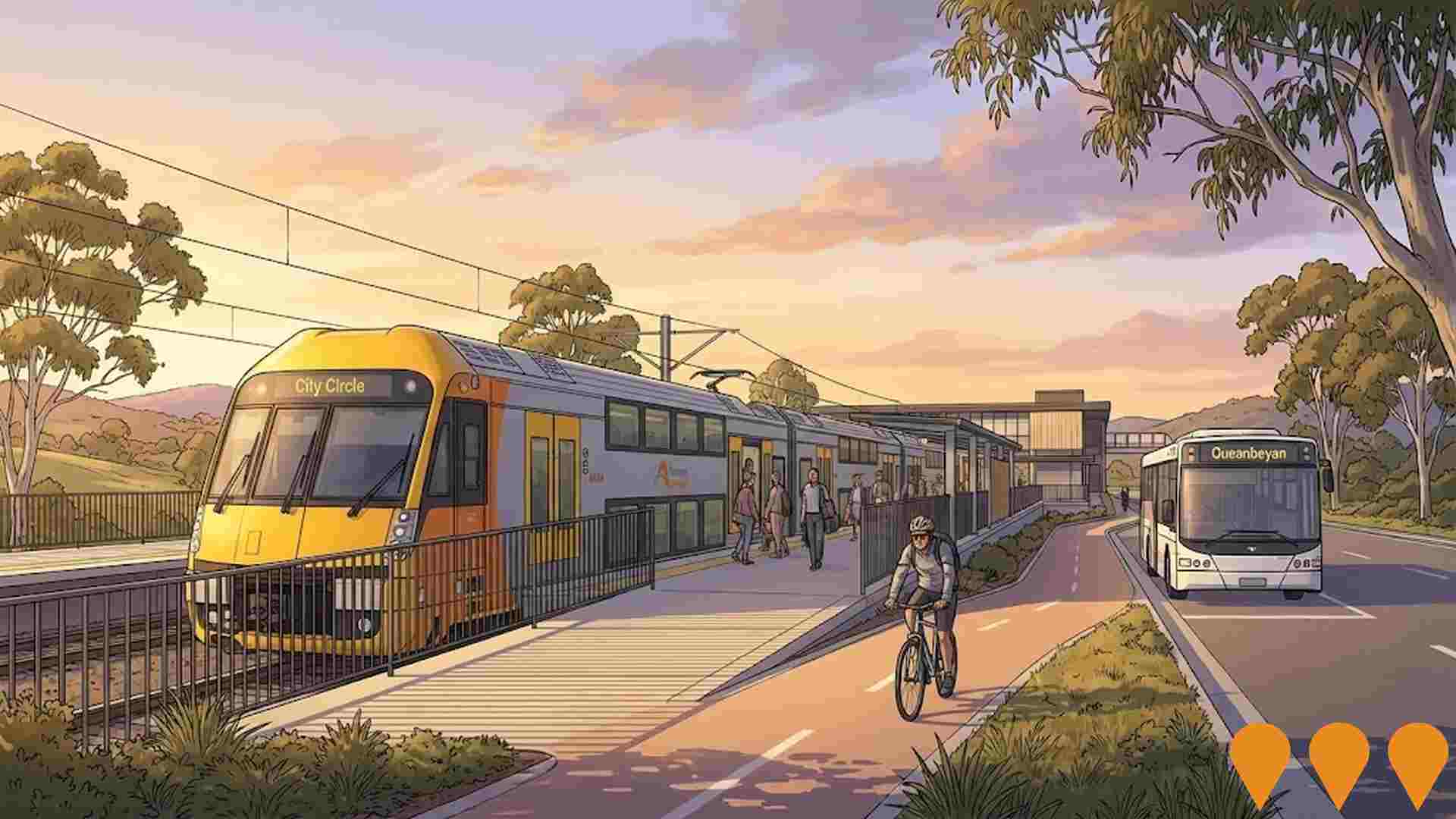
Big Canberra Battery (Williamsdale BESS)
A 250 MW / 500 MWh battery energy storage system at Williamsdale in southern Canberra, delivered by Eku Energy as Stream 1 of the ACT Government's Big Canberra Battery. Construction commenced in November 2024 with partners CPP and Tesla supplying Megapack systems. The asset will connect to Evoenergy's 132 kV network near the Williamsdale substation to provide two hours of dispatchable power, grid services and reliability for the ACT. Target operations in 2026.
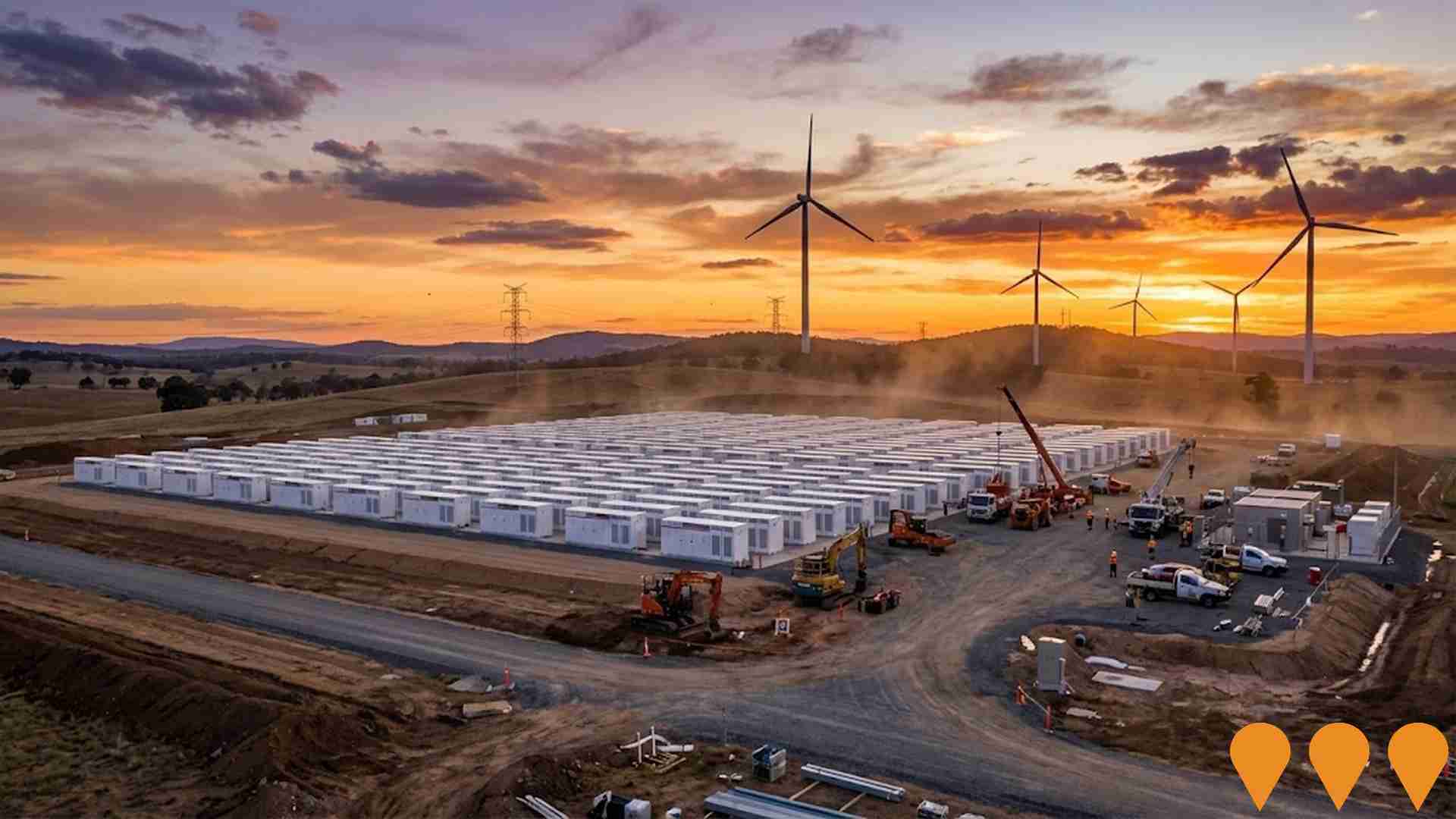
NSW Heavy Vehicle Rest Stops Program (TfNSW)
Statewide Transport for NSW program to increase and upgrade heavy vehicle rest stopping across NSW. Works include minor upgrades under the $11.9m Heavy Vehicle Rest Stop Minor Works Program (e.g. new green reflector sites and amenity/signage improvements), early works on new and upgraded formal rest areas in regional NSW, and planning and site confirmation for a major new dedicated rest area in Western Sydney. The program aims to reduce fatigue, improve safety and productivity on key freight routes, and respond to industry feedback collected since 2022.
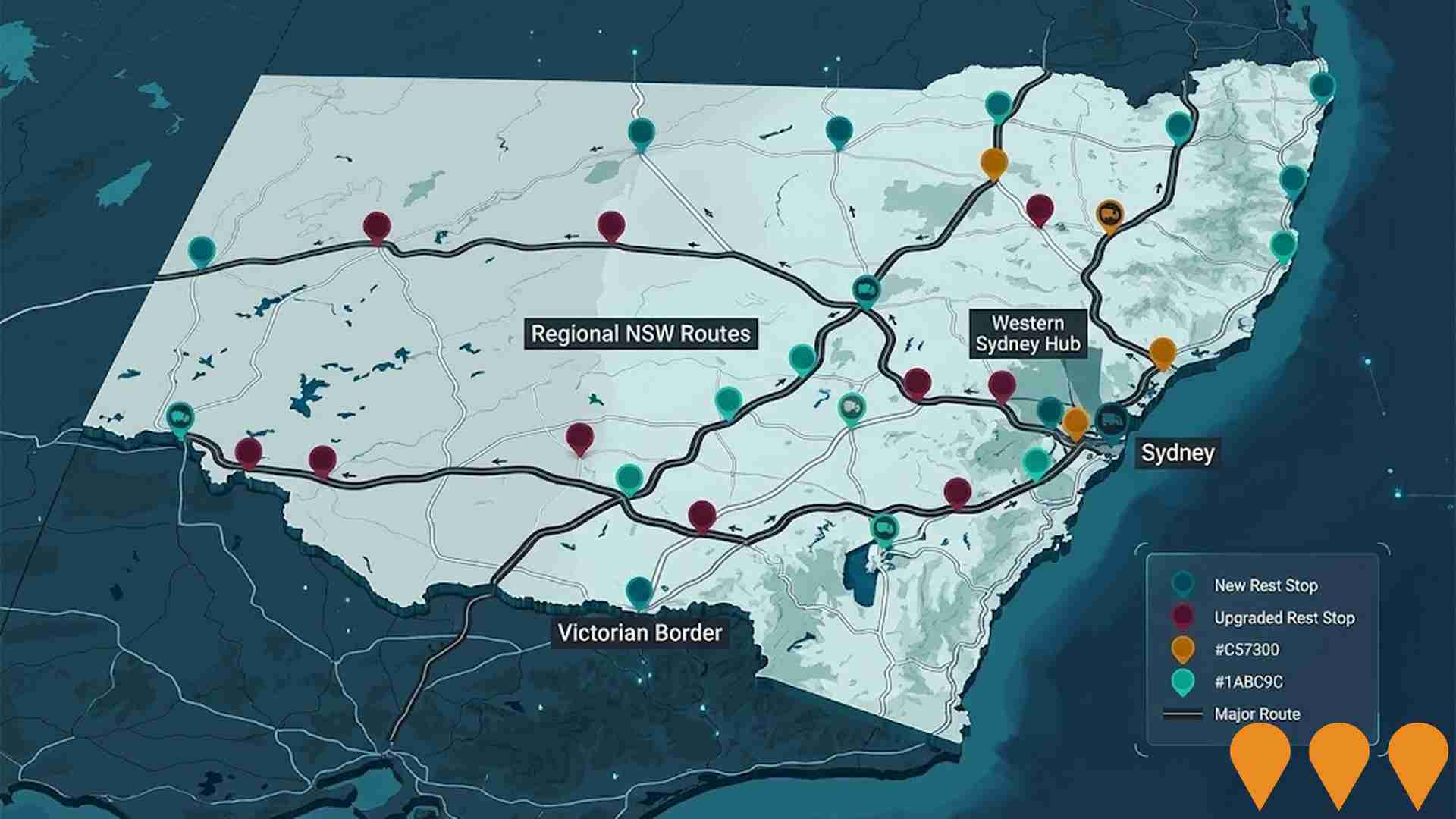
Deakin Private Hospital
Deakin Private Hospital offers premium and integrated inpatient, day therapy, and hospital-in-the-home services, focusing on individualised and high-quality mental health treatment. It includes a Specialised PTSD & Trauma Support Unit for military and first responders, and services such as Repetitive Transcranial Magnetic Stimulation (rTMS) for depression. The hospital also features co-located clinics and is supported by a multidisciplinary team of Psychiatrists, Medical, Nursing, and Allied Health professionals.

Employment
Employment performance in Gilmore has been below expectations when compared to most other areas nationally
Gilmore has a skilled workforce with an unemployment rate of 5.6% as of June 2025. The area experienced an estimated employment growth of 1.8% over the past year.
There are 1,430 residents in work while the unemployment rate is 2.2% higher than the Australian Capital Territory's rate of 3.4%. Workforce participation is on par with the Australian Capital Territory's 69.6%. Leading employment industries among Gilmore residents include public administration & safety, construction, and health care & social assistance. The area shows strong specialization in construction, with an employment share 1.8 times the regional level.
However, professional & technical services are under-represented, with only 7.5% of Gilmore's workforce compared to 11.1% in Australian Capital Territory. Employment levels increased by 1.8% and labour force increased by 1.6% during the year to June 2025, causing the unemployment rate to fall by 0.2 percentage points. National employment forecasts from Jobs and Skills Australia, published in May 2025, project a growth of approximately 6.3% over five years and 12.9% over ten years for Gilmore's employment mix.
Frequently Asked Questions - Employment
Income
The economic profile demonstrates exceptional strength, placing the area among the top 10% nationally based on comprehensive AreaSearch income analysis
AreaSearch's latest postcode level ATO data for financial year 2022 shows Gilmore's median income among taxpayers is $68,725, with an average of $76,168. These figures are high nationally, compared to the Australian Capital Territory's median of $68,678 and average of $83,634. Based on Wage Price Index growth of 13.6% since financial year 2022, current estimates for Gilmore would be approximately $78,072 (median) and $86,527 (average) as of September 2025. The 2021 Census data ranks household, family and personal incomes in Gilmore between the 88th and 89th percentiles nationally. Income analysis reveals that 36.6% of residents (969 people) fall into the $1,500 - 2,999 weekly income bracket, reflecting patterns seen in the surrounding region where 34.3% occupy this range. Notably, 37.9% earn above $3,000 weekly, indicating prosperity and robust local economic activity. After housing costs, residents retain 86.8% of their income, reflecting strong purchasing power. The area's SEIFA income ranking places it in the 7th decile.
Frequently Asked Questions - Income
Housing
Gilmore is characterized by a predominantly suburban housing profile, with a higher proportion of rental properties than the broader region
Dwelling structure in Gilmore, as evaluated at the latest Census, comprised 92.8% houses and 7.2% other dwellings. In comparison, the Australian Capital Territory had 79.6% houses and 20.4% other dwellings. Home ownership in Gilmore was 30.5%, similar to the Australian Capital Territory's level. Dwellings were either mortgaged (46.1%) or rented (23.4%). The median monthly mortgage repayment in Gilmore was $2,048, higher than the Australian Capital Territory average of $2,000. The median weekly rent figure in Gilmore was $430, compared to the Australian Capital Territory's $425. Nationally, Gilmore's mortgage repayments were higher at $1,863, and rents were substantially above the national figure of $375.
Frequently Asked Questions - Housing
Household Composition
Gilmore features high concentrations of family households, with a higher-than-average median household size
Family households constitute 80.7% of all households, including 38.6% couples with children, 27.8% couples without children, and 13.5% single parent families. Non-family households comprise the remaining 19.3%, with lone person households at 18.6% and group households making up 1.2%. The median household size is 2.8 people, larger than the Australian Capital Territory average of 2.6.
Frequently Asked Questions - Households
Local Schools & Education
Gilmore shows below-average educational performance compared to national benchmarks, though pockets of achievement exist
The area's university qualification rate is 24.8%, significantly lower than the SA4 region average of 46.8%. Bachelor degrees are most common at 16.2%, followed by postgraduate qualifications (4.9%) and graduate diplomas (3.7%). Vocational credentials are prevalent, with 35.2% of residents aged 15+ holding such qualifications - advanced diplomas (11.8%) and certificates (23.4%). Educational participation is high at 27.4%, including 9.9% in primary education, 7.7% in secondary education, and 3.4% in tertiary education.
Gilmore Primary School serves the area with an enrollment of 130 students. The school focuses on primary education, with ICSEA score of 969, indicating typical Australian school conditions and balanced educational opportunities. Secondary options are available in nearby areas. Local school capacity is limited at 4.9 places per 100 residents compared to the regional average of 14.9, leading many families to travel for schooling.
Frequently Asked Questions - Education
Schools Detail
Nearby Services & Amenities
Transport
Transport servicing is moderate compared to other areas nationally based on assessment of service frequency, route connectivity and accessibility
The analysis of public transport in Gilmore shows that there are 16 active transport stops currently operating. These stops serve a mix of bus routes, with a total of 4 individual routes providing service. Together, these routes facilitate 526 weekly passenger trips.
The accessibility of transport in the area is rated as good, with residents on average located approximately 202 meters from the nearest transport stop. The service frequency averages out to 75 trips per day across all routes, which equates to roughly 32 weekly trips per individual stop.
Frequently Asked Questions - Transport
Transport Stops Detail
Health
Health outcomes in Gilmore are marginally below the national average with common health conditions slightly more prevalent than average across both younger and older age cohorts
Health indicators suggest below-average outcomes in Gilmore.
Common health conditions are slightly more prevalent than average across both younger and older age cohorts. The rate of private health cover is exceptionally high at approximately 58% of the total population (1,530 people). The most common medical conditions are asthma and mental health issues, impacting 9.7 and 9.4% of residents respectively. 66.9% of residents declare themselves completely clear of medical ailments, compared to 66.1% across Australian Capital Territory. The area has 13.8% of residents aged 65 and over (366 people), which is lower than the 17.6% in Australian Capital Territory. Health outcomes among seniors are above average, performing even better than the general population in health metrics.
Frequently Asked Questions - Health
Cultural Diversity
The level of cultural diversity witnessed in Gilmore was found to be above average when compared nationally for a number of language and cultural background related metrics
Gilmore's population showed above-average cultural diversity, with 18.5% born overseas and 15.2% speaking a language other than English at home. Christianity was the predominant religion in Gilmore, accounting for 50.5% of its population. Buddhism, however, was equally represented compared to the Australian Capital Territory's average of 2.1%.
The top three ancestral groups were Australian (28.0%), English (25.4%), and Irish (9.3%). Notably, Serbian (0.8%) and Dutch (1.7%) ethnicities were relatively overrepresented in Gilmore compared to regional averages of 0.4% and 1.4%, respectively.
Frequently Asked Questions - Diversity
Age
Gilmore's population is slightly younger than the national pattern
Gilmore's median age in recent years has been 37 years, which is slightly higher than the Australian Capital Territory's median age of 35 but closely aligns with the national average of 38 years. The age group of 55-64 years old constitutes a strong 14.1% of Gilmore's population compared to the Australian Capital Territory, while the 25-34 age cohort is less prevalent at 13.5%. Between 2021 and present, the percentage of the population aged 75 to 84 has grown from 2.4% to 3.9%, and the 0 to 4 age group has increased from 6.1% to 7.4%. Conversely, the 15 to 24 age cohort has decreased from 11.7% to 9.9%. By the year 2041, population forecasts suggest significant demographic shifts in Gilmore. The 45-54 age group is projected to increase by 39 people (a rise of 12%) from 333 to 373 individuals. Conversely, population declines are anticipated for the 5-14 and 55-64 age cohorts.
